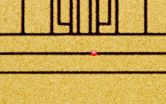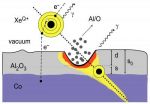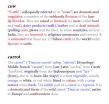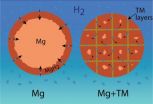(Press-News.org) Paris, France, 31 August 2011: "The ESC Congress 2011 in Paris has been a record breaking event" said Prof Michael Böhm, chairman of the ESC Congress Programme Committee. "With a total attendance of 32 946 participants, this is our largest congress ever. We are especially pleased to see that more and more delegates are coming from outside Europe. Large delegations came from Brazil, Japan, China and India this year," said Prof Böhm.
"The quality of the scientific content at the ESC Congress attracts more and more participants each year," explained Prof Böhm. "The medical community was eagerly waiting to hear about the results of important trials such as ARISTOTLE, Dai-VESSEL AND RUBY-1 which were announced in Paris."
ARISTOTLE was probably the highlight of this congress as apixaban was shown to be superior to warfarin in the prevention of stroke and systemic embolism in patients with atrial fibrillation. The drug was also associated with less bleeding and lower mortality rates.
Further interesting studies were the PRODIGY trial, which showed that a 6 months dual antiplatelet therapy after stent implantation (drug eluting and bare metal, stable and unstable patients) was as effective as 24 months, and associated with statistically lower bleeding hazards. The EXAMINATION trial, which demonstrated equivalence for a drug eluting stent (everolimus eluting) vs. bare metal stents (cobalt chromium) with respect to hard clinical endpoints but lower stent thrombosis and revascularization rates up to 1 year, was also a highlight of the ESC Congress 2011.
Prof Michel Komajda, President of the European Society of Cardiology, highlighted the fact that 2011 was the year of the registry: "Registries allow us to see if doctors are following guidelines. The PURE registry, for example showed worrying results: patients with previous cardiovascular disease are not receiving adequate treatment. The registry which enrolled 154,000 adults in 17 countries, found that in low income countries, 80 % of cardiac patients received no medication at all, while in high income countries 11, 2% did not receive adequate treatment. There is still progress to make in prevention and treatment all over the world."
The ESC has launched its own registries. Three of them were presented at ESC Congress 2011: Heart Failure, Atrial Fibrillation Ablation and Pregnancy and Heart Disease. "So far, we had little data on how women with pre-existing heart disease fared during pregnancy. Complications are frequent and may be life threatening. Our registry is the first of the kind and results were worrying as maternal and foetal deaths were higher in this patient set than expected. This registry shows the need for collaboration between gynaecologists and cardiologists in the follow-up of pregnancies in women with heart disease" said Prof Komajda.
New clinical guidelines were also released by the European Society of Cardiology on the management of cardiovascular disease in pregnancy: "Because of the increasing prevalence of heart disease in young women, these guidelines emphasising the need for screening and risk assessment of pregnant women are extremely important," said Prof Komajda. Other guidelines announced by the ESC include new recommendations on peripheral artery diseases and updated ESC guidelines on the management of non-ST elevation acute coronary syndromes.
The ESC announced that it will extend its EurObservational registry project. New registries will include heart failure, atrial fibrillation and chronic ischaemic heart disease. EuroAspire IV will be launched in 2012 to collect data on epidemiology and risk factors across Europe.
Outside of Hot Lines and Clinical Trial Updates, the media had its favourite studies too. Presentations on the beneficial effects of chocolate on the heart and on the positive effect of laughter on blood vessels were widely reported. On the contrary, other studies confirmed that overtime, job strain and anger are all cardio-toxic. "Increasingly, psychological factors are recognised as playing a major role in triggering heart disease," said Prof Kurt Huber, chairperson of the ESC Press Committee.
A public event was held on 28 and 29 August in front of the Town Hall in Paris in order to pass on the European Society of Cardiology's key messages to the public: eat well, don't smoke, stop stressing and get up and exercise! Cardiologists were present to give advice. Around 3 000 Parisians and tourists visited the different stands and participated in activities such as baby gym, "zumba-fitness" and workshops on healthy cooking.
###The ESC Congress is an annual event. Next year, cardiologists and allied professions will meet in Munich, Germany, from 25 to 29 August 2012. The spotlight of this congress is "from bench to practice."
NOTES TO EDITORS
ESC Online Resources: slides, abstracts, webcasts and other information about ESC Congress 2011 can be found on:
http://www.escardio.org/congresses/esc-2011/congress-topic/Pages/welcome.aspx
About the European Society of Cardiology
The European Society of Cardiology (ESC) represents more than 71,200 cardiology professionals across Europe and the Mediterranean. Its mission is to reduce the burden of cardiovascular disease in Europe.
About ESC Congress 2011
ESC Congress 2011 will take place from 27 August to 31 August at Paris Nord Villepinte, Paris. Information on the scientific programme is available at http://spo.escardio.org/Welcome.aspx?eevtid=48
More information on ESC Congress 2011 is available from the ESC's press office at press@escardio.org.
ESC Congress 2011 highlights
2011-09-01
ELSE PRESS RELEASES FROM THIS DATE:
Researcher identifies nearly 100 studies supporting use of thermal ablation to treat lung cancer
2011-09-01
(Providence, R.I.) – The journal Radiology will publish in its September issue an article written by Damian E. Dupuy, M.D., director of tumor ablation at Rhode Island Hospital, supporting the use of ablation procedures for the treatment of lung cancer. The article, "Image-guided Thermal Ablation of Lung Malignancies," reviews the results of nearly 100 studies conducted between 1991 and 2011 that conclude that image-guided ablation for lung cancer is a successful alternative for patients who cannot withstand surgery due to advanced age or medical comorbidities.
Percutaneous ...
Successful rainwater harvesting systems should combine new technology with old social habits
2011-09-01
As a crippling drought grips much of the Southern and Southwestern United States, the population continues to grow and water resources become scarcer. One way to address the problem is by a combination of modern engineering and ancient social principles, outlined in a new paper on rainwater harvesting that will be presented at the 2011 ASME International Mechanical Engineering Congress and Exposition.
Author John Whear, biomedical engineer at the Cancer Therapy & Research Center at The University of Texas Health Science Center at San Antonio, examines how to manage rainwater ...
NIST achieves record-low error rate for quantum information processing with one qubit
2011-09-01
Thanks to advances in experimental design, physicists at the National Institute of Standards and Technology (NIST) have achieved a record-low probability of error in quantum information processing with a single quantum bit (qubit)—the first published error rate small enough to meet theoretical requirements for building viable quantum computers.
A quantum computer could potentially solve certain problems that are intractable using today's technology, even supercomputers. The NIST experiment with a single beryllium ion qubit, described in a forthcoming paper,* is a milestone ...
Researchers expand capabilities of miniature analyzer for complex samples
2011-09-01
It's not often that someone can claim that going from a positive to a negative is a step forward, but that's the case for a team of scientists from the National Institute of Standards and Technology (NIST) and private industry. In a recent paper,* the group significantly extended the reach of their novel microfluidic system for analyzing the chemical components of complex samples. The new work shows how the system, meant to analyze real-world, crude mixtures such as dirt or whole blood, can work for negatively charged components as well as it has in the past for positively ...
Ion armageddon: Measuring the impact energy of highly charged ions
2011-09-01
Much like a meteor impacting a planet, highly charged ions hit really hard and can do a lot of damage, albeit on a much smaller scale. And much like geologists determine the size and speed of the meteor by looking at the hole it left, physicists can learn a lot about a highly charged ion's energy by looking at the divots it makes in thin films.
Building upon their work for which they were recently awarded a patent,* scientists at the National Institute of Standards and Technology (NIST) and Clemson University have measured the energy of highly charged ion impacts on a ...
Solar industry responsible for lead emissions in developing countries
2011-09-01
Solar power is not all sunshine. It has a dark side—particularly in developing countries, according to a new study by a University of Tennessee, Knoxville, engineering professor.
A study by Chris Cherry, assistant professor in civil and environmental engineering, found that solar power heavily reliant on lead batteries has the potential to release more than 2.4 million tons of lead pollution in China and India.
Lead poisoning causes numerous adverse health effects, including damage to the central nervous system, the kidneys, the cardiovascular system, and the reproductive ...
Word association: Princeton study matches brain scans with complex thought
2011-09-01
In an effort to understand what happens in the brain when a person reads or considers such abstract ideas as love or justice, Princeton researchers have for the first time matched images of brain activity with categories of words related to the concepts a person is thinking about. The results could lead to a better understanding of how people consider meaning and context when reading or thinking.
The researchers report in the journal Frontiers in Human Neuroscience that they used functional magnetic resonance imaging (fMRI) to identify areas of the brain activated when ...
Iron 'Veins' Are Secret of Promising New Hydrogen Storage Material
2011-09-01
With a nod to biology, scientists at the National Institute of Standards and Technology (NIST) have a new approach to the problem of safely storing hydrogen in future fuel-cell-powered cars. Their idea: molecular scale "veins" of iron permeating grains of magnesium like a network of capillaries. The iron veins may transform magnesium from a promising candidate for hydrogen storage into a real-world winner.
Hydrogen has been touted as a clean and efficient alternative to gasoline, but it has one big drawback: the lack of a safe, fast way to store it onboard a vehicle. ...
Registration Opens September 1 for 4th Annual Renton FilmFrenzy, a 50-Hour Filmmaking Competition with $1,700 in Cash Prizes; Filmmakers will Take Over Renton from Oct. 7-9
2011-09-01
It will be "lights, camera, action" in Renton from October 7-9, when aspiring, ahead of the curve filmmakers take over the city for the fourth annual Renton FilmFrenzy, a 50-hour filmmaking competition. Last year, 25 filmmaking teams competed for $1,700 in cash prizes and the coveted Curvee Awards.
"Thanks to our partnerships with SIFF, Reel Grrls, theFilmSchool, area filmmaking programs, and the Renton Arts Commission, the Renton FilmFrenzy continues to expand and has become an integral part of the growing and strong Renton arts community," said ...
Sandfly saliva provides important clues for new Leishmaniasis treatments
2011-09-01
Bethesda, MD—For millions of people who live under the constant threat of Leishmania infection, a new discovery by Brazilian scientists may lead to new breakthroughs, preventing these parasites from taking hold in the body or reducing the severity of infections once they occur. In a new report appearing in the Journal of Leukocyte Biology (http://www.jleukbio.org), scientists show that specific molecules found in the saliva of the sandfly—a small flying insect that is the vector for the parasite—make it possible for Leishmania to evade neutrophils and live within human ...




